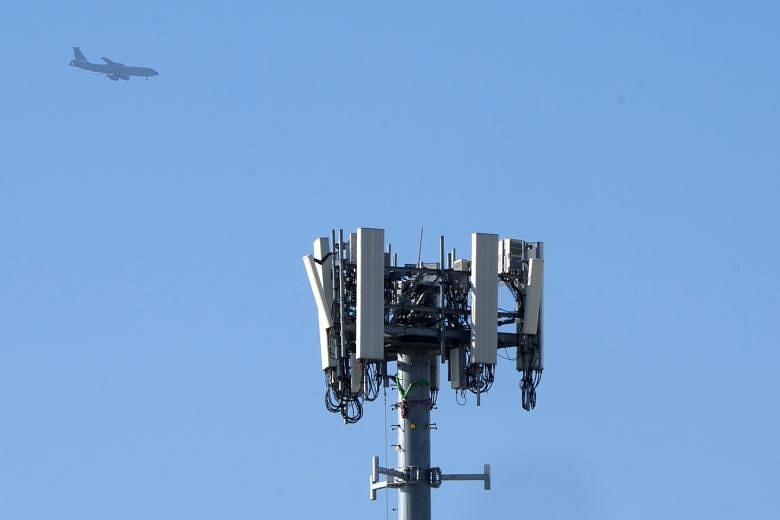
AT&T and Verizon are likely to launch a new 5G service. But due to 5G, the CEOs of major US passenger and cargo airlines warned of an oncoming “catastrophic” aviation havoc.
The airlines have warned that the new C-Band 5G service might render a large number of widebody aircraft unusable. It “could potentially strand tens of thousands of Americans overseas” and cause “chaos” for U.S. flights. The new C-Band 5G service is going to launch on Wednesday.
“Unless our major hubs are cleared to fly, the vast majority of the traveling and the shipping public will essentially be grounded,” wrote the CEOs of American Airlines, Delta Air Lines, United Airlines, Southwest Airlines, and others.
Proposed restrictions at selected airports

The Federal Aviation Administration (FAA) has issued a warning. A possible interference could impair sensitive airplane instruments such as altimeters, causing severe delays in low-visibility flights.
“This means that on a day like yesterday, more than 1,100 flights and 100,000 passengers would be subjected to cancellations, diversions, or delays,” the letter cautioned.
Airlines were contemplating whether to start canceling some overseas flights arriving in the US on Wednesday.
“With the proposed restrictions at selected airports, the transportation industry is preparing for some service disruption. We are optimistic that we can work across industries and with the government to finalize solutions that safely mitigate as many schedule impacts as possible,” plane maker Boeing said on Monday.
Action is urgent, they added in the letter also signed by UPS Airlines, Atlas Air, JetBlue Airways, and FedEx Express. “To be blunt, the nation’s commerce will grind to a halt.”
The White House National Economic Council director Brian Deese, Transportation Secretary Pete Buttigieg, Federal Aviation Administration (FAA) Administrator Steve Dickson, and Federal Communications Commission (FCC) Chairwoman Jessica Rosenworcel received the letter. Reuters had seen it
The group that organized the letter, Airlines for America, declined to comment. The government agencies did not respond right away.
Postpone deployment
On Jan. 3, AT&T and Verizon agreed to buffer zones around 50 airports. Also, other measures to prevent potential interference for six months. They acquired nearly all of the C-Band spectrum in an $80 billion auction last year. They also decided to postpone deployment for two weeks, until Wednesday, averting an aviation safety impasse for the time being. On Monday, both Verizon and AT&T declined to comment.
Officials told Reuters that the CEOs of major airlines and Boeing Chief Executive Dave Calhoun, spoke with Buttigieg and Dickson. It was to warn them of the impending catastrophe.
5G planes havoc: Immediate Intervention

“Immediate intervention is needed to avoid significant operational disruption to air passengers, shippers, supply chain and delivery of needed medical supplies,” they say.
The airlines also said that flight limitations will not limit poor weather operations. “Multiple modern safety systems on aircraft will deem unusable causing a much larger problem than what we knew… Airplane manufacturers have informed us that there are huge swaths of the operating fleet that may need to be indefinitely grounded.”
According to airline officials, there is one area of concern for 5G. It is whether some or all Boeing 777s, Boeing cargo flights will be unable to land at some key U.S. airports.
The airlines urged action to ensure “5G is deployed except when towers are too close to airport runways until the FAA can determine how that can be safely accomplished without catastrophic disruption.”
The FAA announced on Sunday that it had approved low-visibility landings for an estimated 45 percent of the US airliner fleet. It is at numerous airports where a 5G C-band would deploy. Also, more approvals expected before Wednesday. The airlines pointed out on Monday that the list omitted several major airports. 5G could create serious planes havoc.
About 5G

It’s the most modern wireless mobile network, 4G technology’s next generation. The new network launched in 2019. It is faster, stronger, and more modern than the old one. It can be useful for telemedicine, self-driving automobiles, remote surveillance and security, virtual reality and augmentation devices, and even telesurgery. Furthermore, it is 100 times faster than 4G.
5G utilizes the higher frequencies of the electromagnetic spectrum, above 3.5 GHz. It’s the first time in mobile networks that such high frequencies are in use. Previously, it was useful only in security scanners. Furthermore, it employs beamforming to transfer data directly to devices. Wireless networks from a previous generation broadcast signals all over the place.
Since the new network’s trials began in 2019, rumors regarding its connection to the pandemic have circulated. The effects of its frequency on humans and the environment currently have a scant investigation. 5G, on the other hand, emits electromagnetic fields. EMFs link to tissue heating and cognitive impairment. EMFs are common carcinogenic.
Its current exposure levels are around 3.5 GHz, which is similar to what we see on our phones. According to the World Health Organization, these levels can change with the use of antennas.






